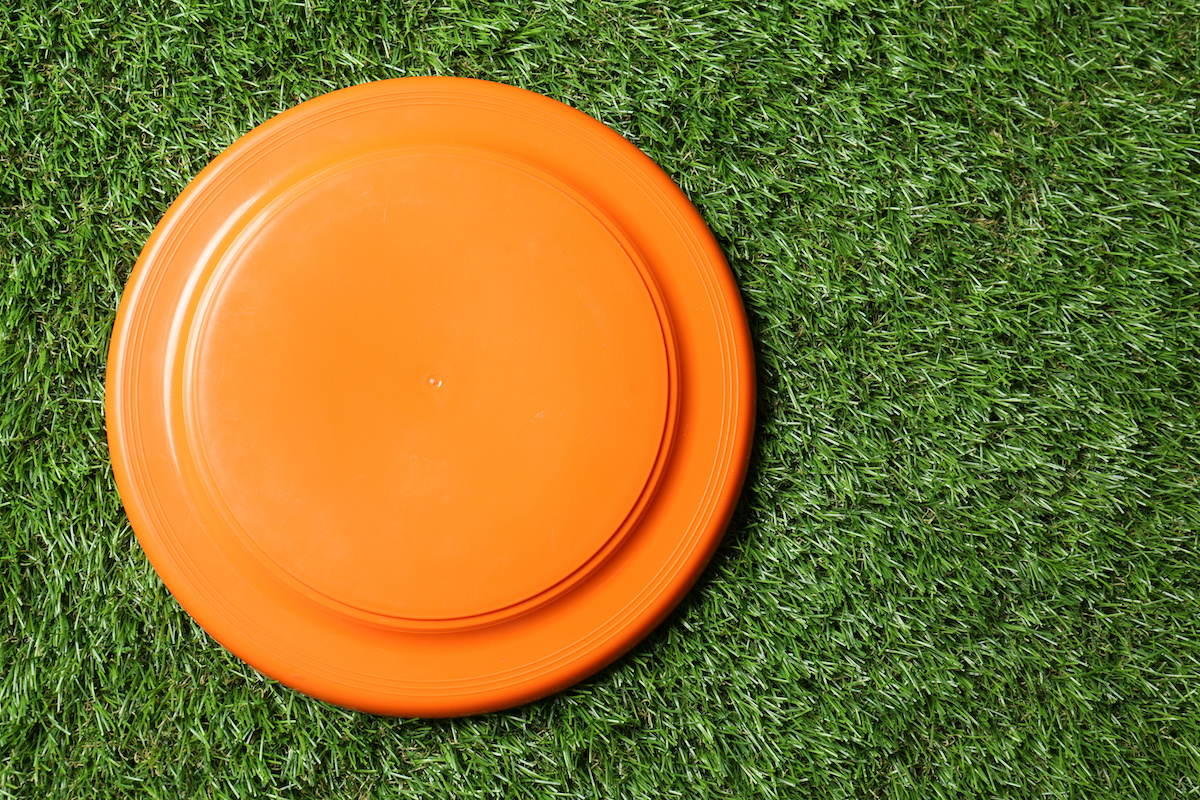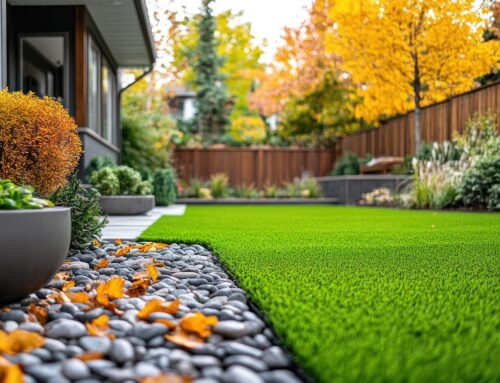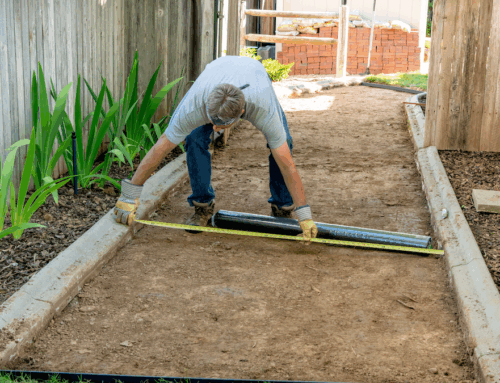Last Updated on June 29, 2023 by ReTurf
It’s a fine morning on your disc golf course. Players approach the first tee pad, scanning the lush landscape ahead. There’s a gentle breeze that promises them a great round of disc golf.
But oh, there’s a slip! A misplaced shot!
“Not the dreaded rubber tee mat again!” they shout.
Indeed, it’s the rubber tee mat, a nemesis known all too well to disc golfers. But wait—there’s a different path to tread here: an upgrade that could change the game: the turf tee pad.
Think about it from a course planner’s perspective. Disc golf is a sport of precision and consistency, and the launchpad, the tee pad, is an essential part of every one of your players’ personal experience. So, why not elevate it?
Benefits of Upgrading Tee Pads to Artificial Turf
Artificial turf tee pads offer a host of advantages over alternative types of tee pads.
For starters, they’re incredibly slip-resistant. That problem of players losing traction mid-throw? It’s history! The specially designed textures of artificial turf ensure a solid grip, offering players the confidence to make that big drive—rain or shine.
Ever seen a new player grimace at the uncomfortable sensation when launching a drive off a rubber mat? With artificial turf, there’s a forgiving cushioning. The material absorbs the force of steps, allowing players to take more aggressive run-ups with less risk of injury.
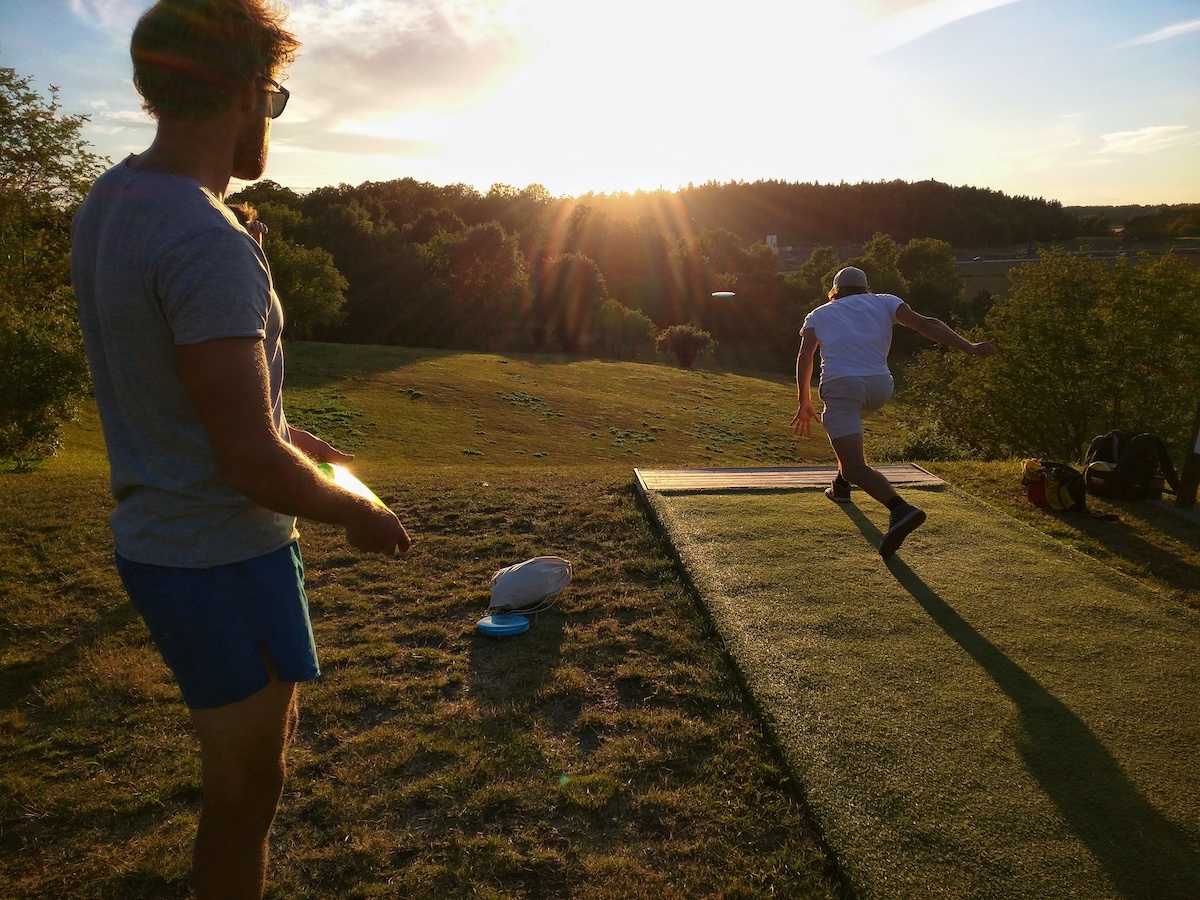
It’s a thoughtful touch your players will appreciate—whether they know it’s because of the turf or not, they’ll come away having had a better overall experience at your course.
Now, let’s talk durability.
While rubber mats can buckle under the strain of intense disc golf rounds, wearing thin and eroding/curling at the edges, artificial turf pads stand firm. They withstand the test of more time and more play, retaining their shape and texture for many rounds.
And talk about low maintenance—no more clearing off gravel or dealing with tricky replacements. The all-weather resistance of artificial turf makes it a fuss-free option.
Now, “What about concrete or cement tee pads?” you may ask. Yes, they are pretty durable. However, they come with their own set of drawbacks.
Cement pads are indeed long-lasting, and offer consistent footing, but they can be unforgiving on players’ bodies over time.
(And a round of disc golf is meant to be fun and relaxing—not to result in a trip to the orthopedist, right?)
Besides being hard on joints, on wet/rainy days (or even when there is a lot of dew if your course is open in the mornings) cement pads can get slick, leading to the same old traction issues.
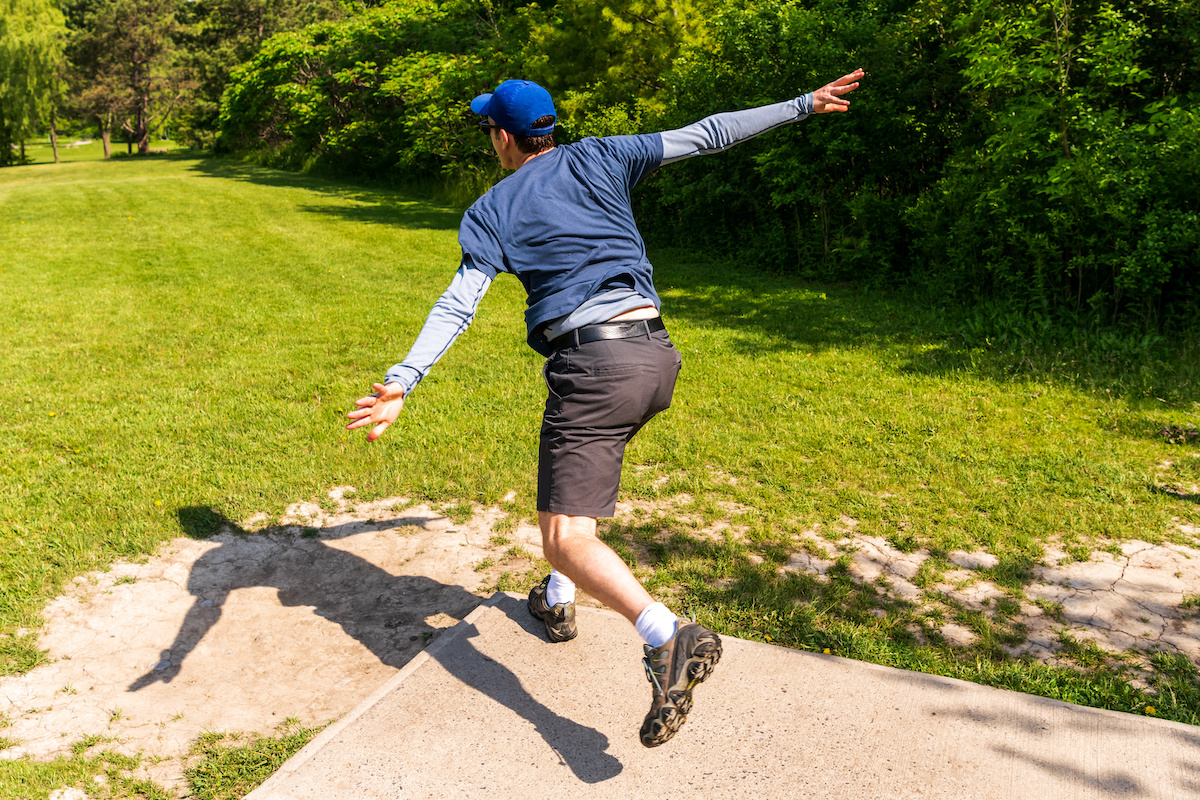
In the photo above, we see a player throwing from one of these golf tee pads, poised on the edge. If this surface were slick from a recent rain, at best he’d face significant challenges, potentially compromising his stance, grip, and ultimately, the precision of his throw.
At worst, he could risk a misstep, slip, or fall, leading not just to a poorly executed shot, but also to potential injury.
Artificial turf, on the other hand, maintains its grip even in such conditions, so players can enjoy the game without these worries.
And let’s not forget the aesthetics. “Naturally,” artificial turf tee pads, with their grass-like appearance, blend virtually seamlessly into the beautiful disc golf landscape. Concrete tee pads can stick out like a sore thumb.
Making Turf Tee Pads More Affordable
Budget constraints? No problem. Whether you’re building a small project or running a non-profit course, you can still step into (or onto) the world of artificial turf tee pads.
Take a look at options like used artificial turf or rolls of remnant artificial turf. These materials can be purchased at a fraction of the cost of new turf—often literally pennies on the dollar—making them a great choice if you’re keeping a close eye on the budget.

And here’s more good news: used turf often comes from stadiums and sports facilities, and is known for its durability and quality.
That means you’re not skimping on the player experience, nor do you have to worry about the turf wearing out prematurely. So even on a shoestring budget, you can still swing that upgrade to artificial turf tee pads.
18th Basket Reflections
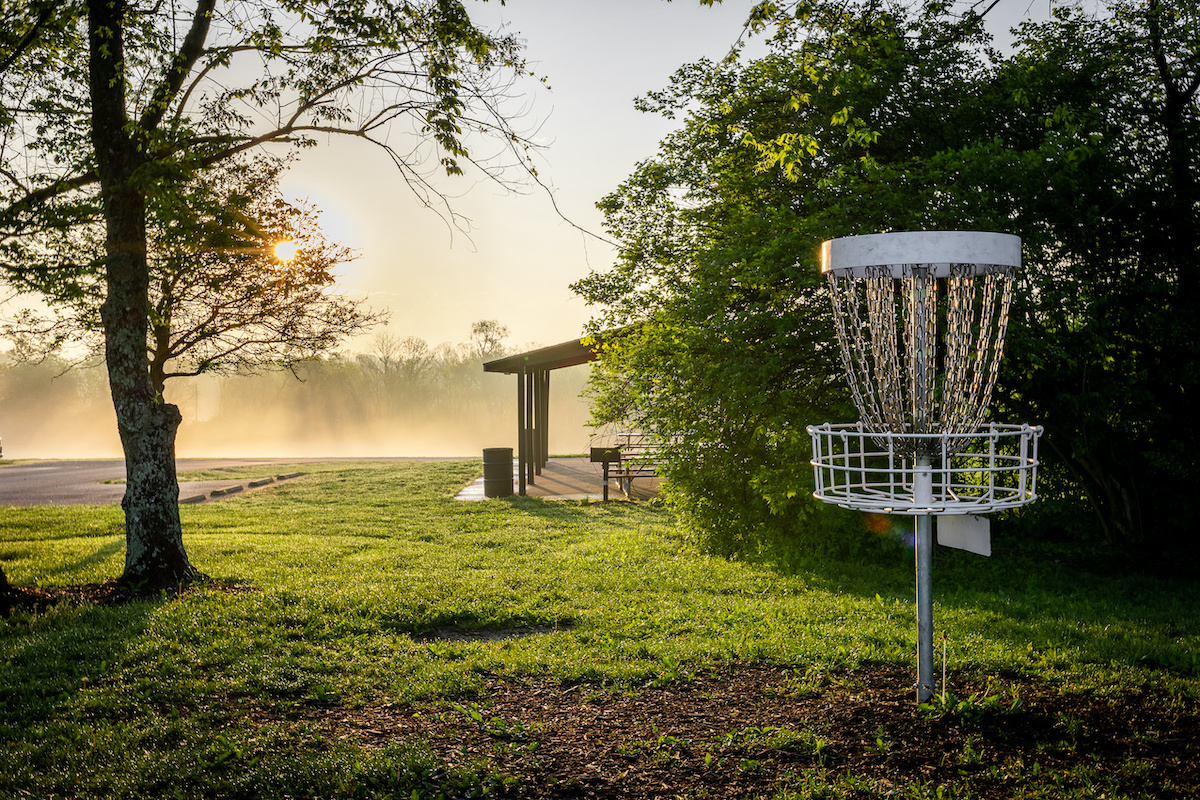
So, when planning or upgrading your disc golf course, consider what’s underfoot. Artificial turf tee pads can provide a consistent, comfortable, and safe launch pad, enhancing the player’s experience. It’s often these subtleties that shape players’ reviews and overall impressions of your course.
Artificial turf tee pads could be the game changer your players have been waiting for.
Contact
Have questions? We’d love to discuss your project with you! Give us a call at (828) 518-5787 or click here to send us an email.
Other Resources from ReTURF:
- Bring Your Golf Game Home with an Artificial Turf Putting Green – This guide delves into the practicalities and considerations of integrating an artificial turf putting green into your residential space.
- Can You Play Lawn Games on Artificial Turf? – An exploration of how well various lawn games fare on artificial turf surfaces.
- 5 Ways to Use Artificial Turf in Sports & Hobby Applications – An informative article presenting five different applications of artificial turf in sports and hobbies.
- How to Build a Bocce Ball Court with Used Artificial Turf – A comprehensive guide detailing the process of building a bocce ball court using “recycled” (used) artificial turf.

